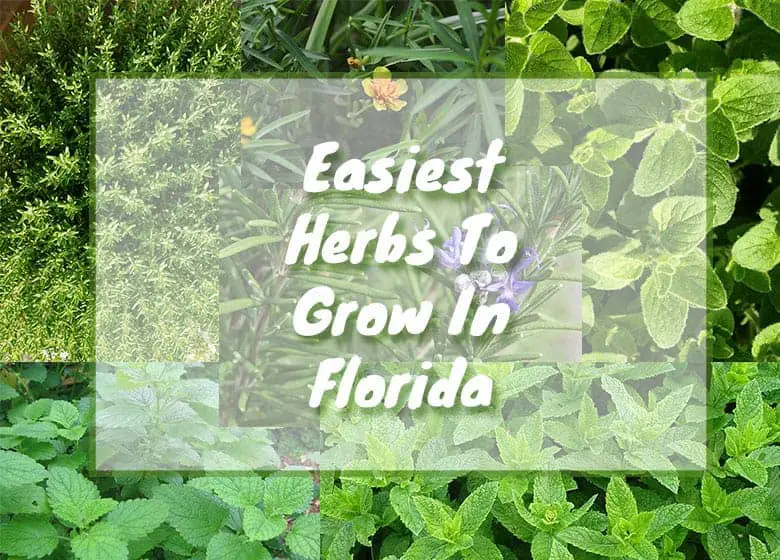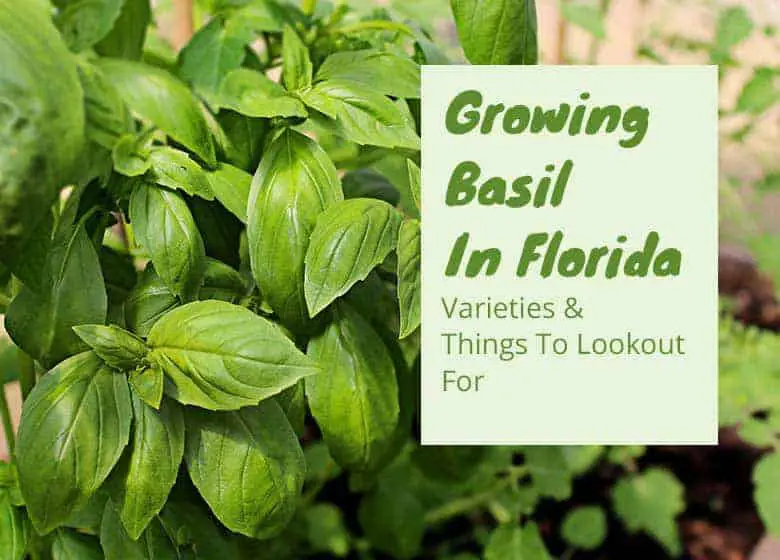
Growing basil in Florida is easy enough since the plant responds to the state’s warm climate.
Most basils are annuals in Florida, but a few are perennials. Basil thrives in sun and well-drained and moist soil. The US Department of Agriculture groups basils into the hardiness zones 9 to 12.
Basil will, therefore, live through winter in all except the northernmost areas of Florida.
Basil’s botanical name is Ocimum basilicum, and it goes by other names like Thai basil and sweet basil. It is grouped in the Lamiaceae family with other culinary herbs like lavender, rosemary, and sage.
The origin of basil is traced to India, but it has been cultivated for more than 5,000 years across the globe. It has been found in Egyptian mummies since ancient Egyptians included it in the embalming process.
Basil served as a symbol of mourning in Greece, and it is regarded as a powerful protector in India. In the medieval era, most doctors considered basil as poisonous, while others thought it was good for “clearing the brain.”
Needless to say, basil has had a weird life.
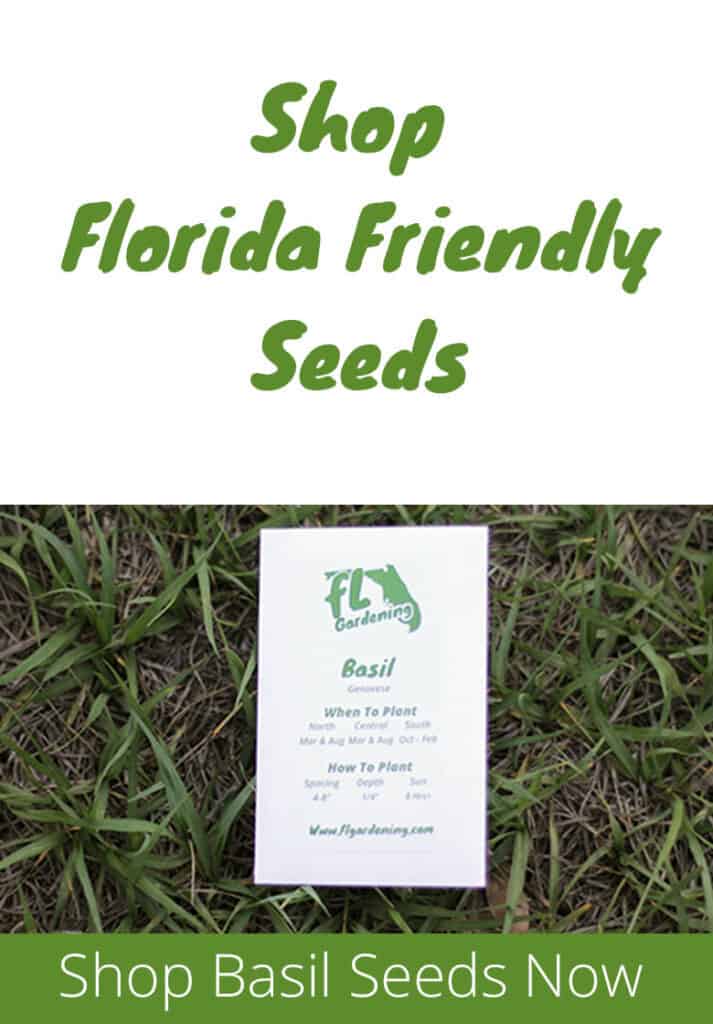
Varieties of Basil
Basil has endless varieties, which can be sectioned into four groups, namely purple leaf, sweet green, scented leaf, and dwarf green. Some varieties can reach heights of 3 feet like the Greek Column-Lesbos. These larger basils will blossom in gardens and flower beds. There are also miniature basils that can thrive in a container including Dwarf Greek basil and Spicy Globe.
- Fino Verde Little Leafed
- Genovese
- Greek Column Lesbos’
- Lettuce leaf
- Lemon/Lime Basil
- Marseillaise Dwarf
- Napolitano Mammoth Leafed
- Osmin
- Purple Ruffle
- Spicy Globe
- Sweet Broadleaf
- Thai
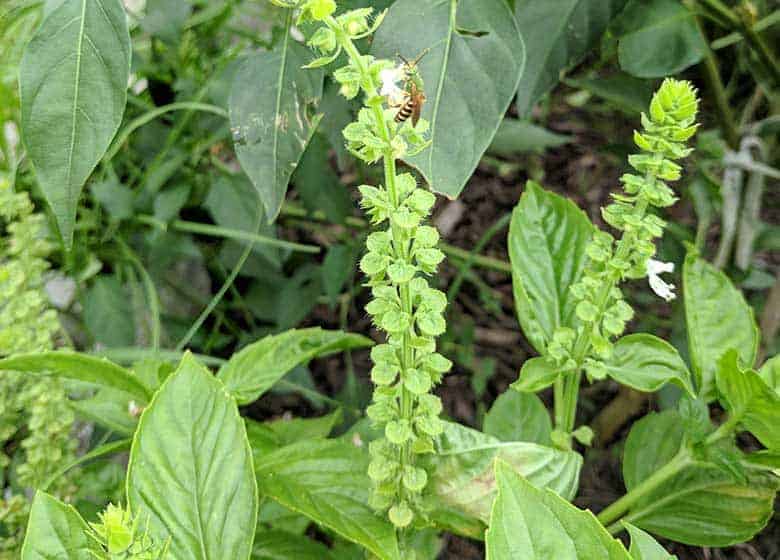
Basils can be significantly different in appearance and size.
One common variety is sweet basil, which has large leaves, an aromatic scent, and a medium green color. It’s one of the more popular kinds.
Purple basil grows to between 12 to 18 inches tall. Its leaves have a glossy purplish hue, and it is very aromatic. It lacks the sweet taste present in other basils in favor of a slight licorice flavor. Its decorative attributes are mostly used in Italian dishes.
Another basil variety is the lemon basil, which features green leaves and an elongated shape. Lemon basil is incredibly nutritious, being packed with anti-oxidative and anti-microbial attributes. The lime basil is often confused with the lemon variety since it also has a narrow shape and green leaves. It is ideal for sauces, marinades, and desserts.
The French variety called Marseillaise Dwarf is often touted as having the best flavor of all basils. It is compact as it grows to only a foot, and it can fit in any space.
Basil leaves are either purple or green and ruffled and flat. The purple-leaf types are coveted for their ornamental properties. Basil flowers come in white, purple, or pink colors and they can also be included in dishes.
Planting Basil in Florida
You can start seed indoors, at about four to six weeks before the last frost. It needs sun and warm air to do well, so it is better to begin indoors rather than risk frost damage.
This is most of the time throughout Florida. In north Florida and central Florida, you should avoid planting November through February. In South Florida, You can probably plant year-round.
Basil thrives in raised beds and containers since they facilitate better drainage. If you intend to use the basil in the kitchen, scout for a location away from busy streets and driveways to avoid exhausting from settling on the plants.
Plant the seedlings/seeds about ¼-inch deep to ten to twelve inches apart. Larger varieties need more space. Tomatoes are the best companion plant for basils.
Basil can be transplanted into the garden, or permanent containers after two sets of leaves have formed. Ensure that the soil is moist because basil loves moisture.
After the basil seedlings have produced the first six leaves, you can prune to above the second set to encourage the plant to begin branching. Keep pruning the branches to the original set of leaves. Pinch off the center shoot after about six weeks to prevent early flowering. Cut off the flowers if they grow.
Where To Plant Basil
Plant your chosen basil variety in a sunny region with afternoon shade, to guard it against the extreme late-day sun. Well-draining soil is another requirement, although this is not an issue through most of Florida.
Basil prefers soils of between 6 to 7.5 in PH.
The soil in most localities of Florida falls well between this range. The PH, however, tends to be high in the southernmost part of the state. If the PH falls above 7.5 after testing, lower it with elemental sulfur and sphagnum peat moss.
If planting into a container or raised bed I’ve always had very good luck with a mix that looks like this:
- 40% Coco coir
- 40% Compost
- 20% perlite
- Worm castings
- Mykos
Peat moss can be substituted for coco coir if you would like. Peat moss is cheaper than coco coir but I don’t think that it’s farming practices are sustainable.
Mykos also isn’t 100% necessary, its a beneficial fungus that helps your plants absorb nutrients.
Watering Basil
Water the plants generously right after planting to settle the soil. Water again when the topsoil starts to dry using a soaker hose or a watering can. Ensure that the leaves are dry to discourage disease. Water in the morning such that the leaves will dry during the day, which can mean watering daily in the Florida heat.
Focus on the base of the basil plant when watering. If it rains, you can do without watering the plants.
Dig down into the soil near the basil with your fingers to assess if it has water. You can do without watering if it is moist two inches down. The method of watering the basil should be slow and deep soaking.
The objective is to have the soil moist and not waterlogged. Basils will wilt and die if left in waterlogged soil for too long. To keep the moisture locked in, add a layer of mulch like chopped up leaves or grass clippings.
Fertilizing Basil
Basils will respond well to a small of fertilizer after 4 to 6 weeks. You can use a granular product or a water-soluble fertilizer. Observe the manufacturer’s directions when mixing a water-soluble type with water. Apply it as you water the basil.
If utilizing a granular type of fertilizer, opt for a balanced one, that is one with equal levels of phosphate, nitrogen, and potassium.
Basil works well with 12-12-12 or 10-10-10 formulas. Scatter the granules around the basil and water them in well.
The granules can burn the plant if they touch. These kinds of fertilizers are applied at the rate of 1 pound for every 100 square feet. If growing the basil in containers, you can scatter several granules on the topsoil. But always follow the bag’s instructions.
Pests and Diseases
Basil growth in Florida can be challenged with downy mildew diseases. Yellowing is the most common symptom of these diseases, although it is easy to mistake it for a nutrient deficiency.
A more obvious sign is the presence of spores on the underside of leaves. You can look out for spores in the morning. If you suspect an infection, Trying spraying Neem or a copper fungicide.
You can, however, situate your basil in a place with good air movement and lots of sunlight. This is the best way to prevent these kinds of diseases.
Some basil types are less susceptible to these diseases like lime basil, Thai basil, and lemon basil.
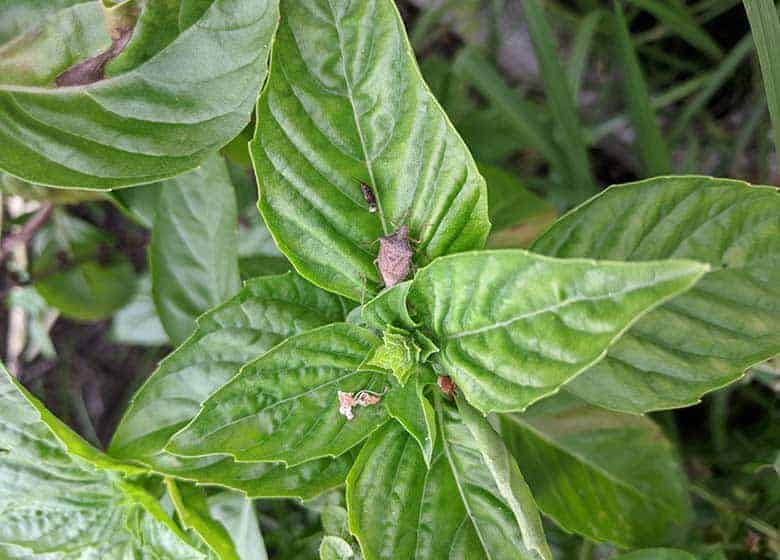
Benefits and Uses of Basil
Basil has long been appreciated in history for a range of benefits and uses including:
Culinary Uses
Basil adds zest to salads, tomato dishes, meat seasonings, soups, sauce, zucchini, and eggplant. Basil is most popularly used in the creation of pesto, which is a creamy, green sauce.
It comprises of parmesan cheese, crushed basil, olive oil, garlic, and pine nuts, although there are dairy-free options.
Basil also complements other spices and herbs like garlic, paprika, rosemary, sage, mustard, and oregano. Take the leaves from a basil plant and add them at the last step of cooking, since heat can diminish the bright green color and flavor.
Reduce Anxiety and Stress
All parts of the basil function as an adaptogen. This natural substance promotes mental balance in the body.
Basil is shown to have anti-anxiety and antidepressant attributes comparable to antidepressant drugs in the Journal of Ayurveda and Integrative Medicine.
These studies focused on the leaves of basils. Ayurvedic practitioners recommend the use of basil leaves as tea to reduce anxiety and stress.
Treat Wounds
Extracts gotten from basil leaves are believed to boost wound healing. Basil is antifungal, analgesic, antiviral, and antibacterial. Some people utilize the plant for healing and protecting surgery wounds. It increases wound’s healing, breaking strength, and contraction. Research also links basil to the treatment of acne, mouth ulcers, and raised scars.
Lower Blood Sugar
Basil can also be beneficial for people with type 2 diabetes and prediabetes. Human and animal trials have exhibited basil’s properties in dealing with symptoms like insulin resistance, hypertension, and weight gain.
You will Also Definitely Find This Article Interesting
